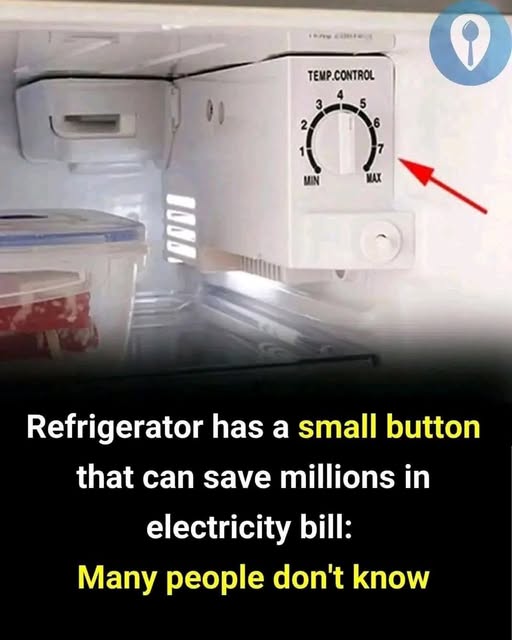What’s the Impact?
⚠️ A fridge that runs too cold not only risks freezing delicate items like produce and beverages, but also wastes energy unnecessarily.
✅ Adjusting the temperature setting to a more moderate level—typically around 3 or 4—can cut refrigerator energy use by up to 25%, depending on the model and how often it’s opened.
With refrigerators running 24/7, even small adjustments can make a big difference over time.
How to Check and Adjust
- Locate the control dial or digital panel inside your fridge. It’s often found near the top or on the side walls.
- Check the current setting. If it’s at the maximum (often labeled “6,” “7,” or “Coldest”), consider turning it down to a middle setting like “3” or “4.”
- Use a thermometer to verify the internal temperature if your fridge doesn’t show it digitally. Aim for 37–40°F (3–4°C) for the fridge and 0°F (-18°C) for the freezer.
- Give it time to adjust. After changing the setting, wait 24 hours before re-checking the temperature.
Bonus Tips to Save Even More:
- Keep your fridge well-stocked. A fuller fridge retains cold air better than an empty one.
- Clean the coils. Dusty condenser coils make the motor work harder, using more electricity.
- Check the door seal. If it doesn’t close tightly, cool air escapes and energy gets wasted.
Conclusion
This small, often-overlooked adjustment can make a surprising difference in your home’s energy efficiency. If every household optimized their refrigerator settings, the collective savings could be enormous—not just for individual budgets, but for the environment, too.
💬 Take a minute today to check your fridge settings—and share this tip with friends and family.
A little awareness can go a long way toward saving money and reducing energy waste.

